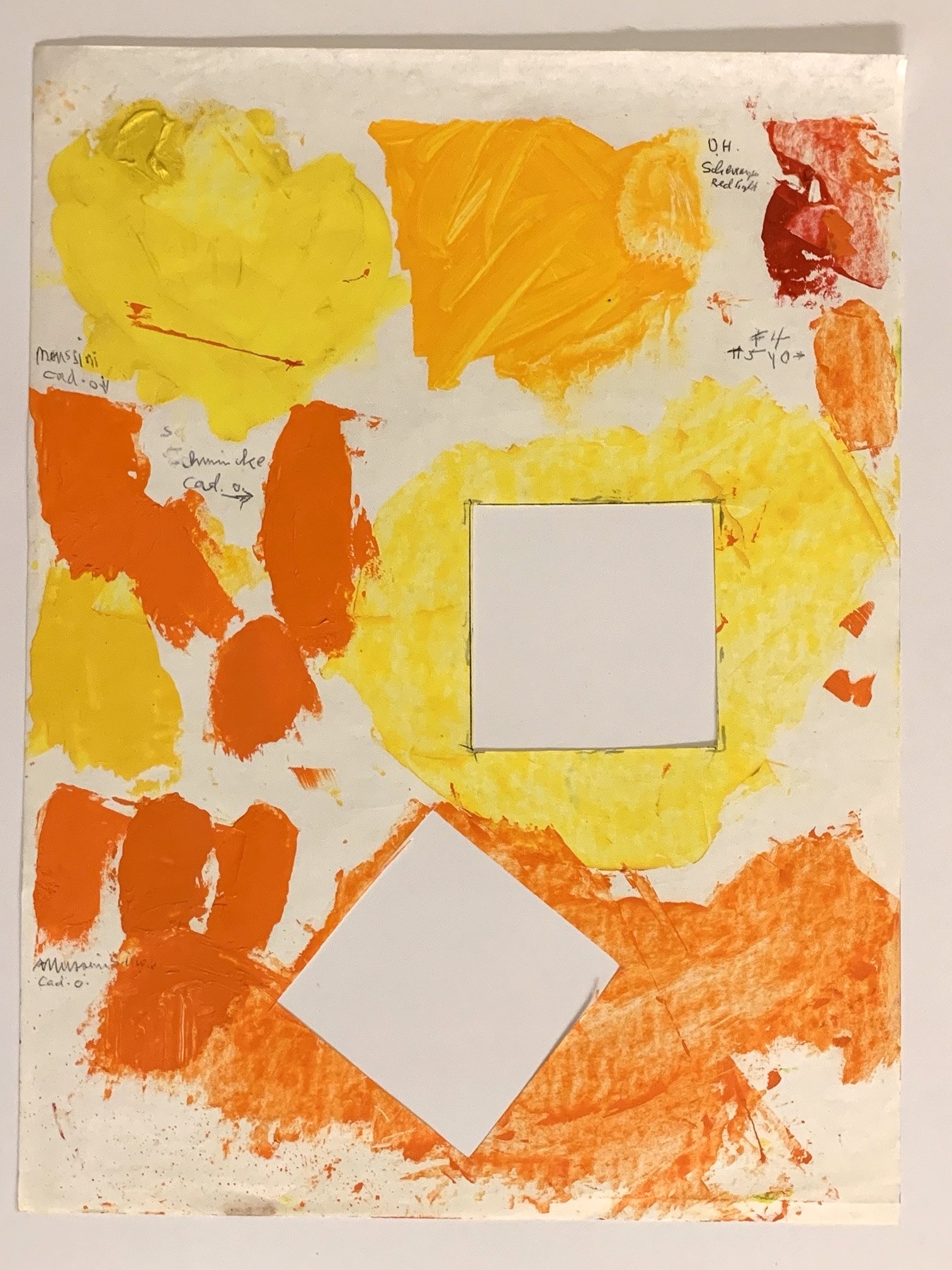From the Archive: Siri’s Color Theory Ancestors
It’s All About Color (Reds), 2012
[SBE1548 (#1-9)] Oil on canvas 10 x 53 in
(25.4 x 134.6 cm) overall [each piece 10 x 5 in (25.4 x 12.7 cm)] Collection of Siri Berg Trust
Untitled (Color Chart), 1968 c.
[SBE2139] Oil and graphite on paper
20 x 16 in (50.8 x 40.6 cm) Collection of Siri Berg Trust
Women In Color.
When it comes to the traditional idea of color theory, we think of male figures such as Johann Wolfgang von Goethe, Yves Klein, and Josef Albers as the master colorists defining our current art history. We rarely mention the female artists who had their own approaches to the concept of color, a realm that is as scientific as it is aesthetic, including innovators such as Mary Gartside (1755-1819) who in 1805 wrote “An Essay on Light and Shade, on Colours, and on Composition in General,” or Emily Noyes Vanderpoel (1842-1939), “Color Problems: A Practical Manual for the Lay Student of Color,” published in 1902. Gartside and Vanderpoel presented unique and radical color systems incorporating Sir Isaac Newton’s emphasis on light and optics, “refashioning the color wheel” or prism, that are still understudied today. Extending the story, a notable color innovator was dancer Loie Fuller (1862-1928) who invented the theatrical color wheel device to use colored light as a compositional element in dance.
Siri Berg made her mark as an expert in color and form during her lifetime as an artist, undeterred by gender norms for female artists permeating the decades of her career. She infused aspects of spirituality, technology, mathematics, and sometimes taboo social mores into her rigorous and equilibrial artworks – creating her own world filled with geometrical binaries, celebrations of nature and creation, and a self-propelled search for the clarity in the “inexorable rhythms of life”. (Zimmer, William, “Siri Berg: Painting & Collages,” Walter Wickiser Gallery, New York, NY, January 28-February 16, 1995. Catalogue essay)
Color Interactions (9 magenta), 2009-2016
[SBE8842a] Oil on vellum
16 x 12 in (40.6 x 30.5 cm) Collection of Siri Berg Trust
Berg, like Gartside and Vanderpoel, went beyond the traditional elements of pure color by experimenting with the mixing and invention of her own colors, textures, and the contrasts of lightness and darkness in her works. She created her own systems and serials (such as “Kabbalah”, touching upon Jewish mysticism, and “Phases”, which were ruminations on W.B. Yeats’s “A Vision”) - veering away from what can be understood as more conventional and “feminine” subject matter.
For more information on women colorists or to contribute to further research, the art historian Aleksandra Loske leads a project on the history of women colorists. @SaschaLoske
Contributed by @YuriChong and @juliagleichdances



